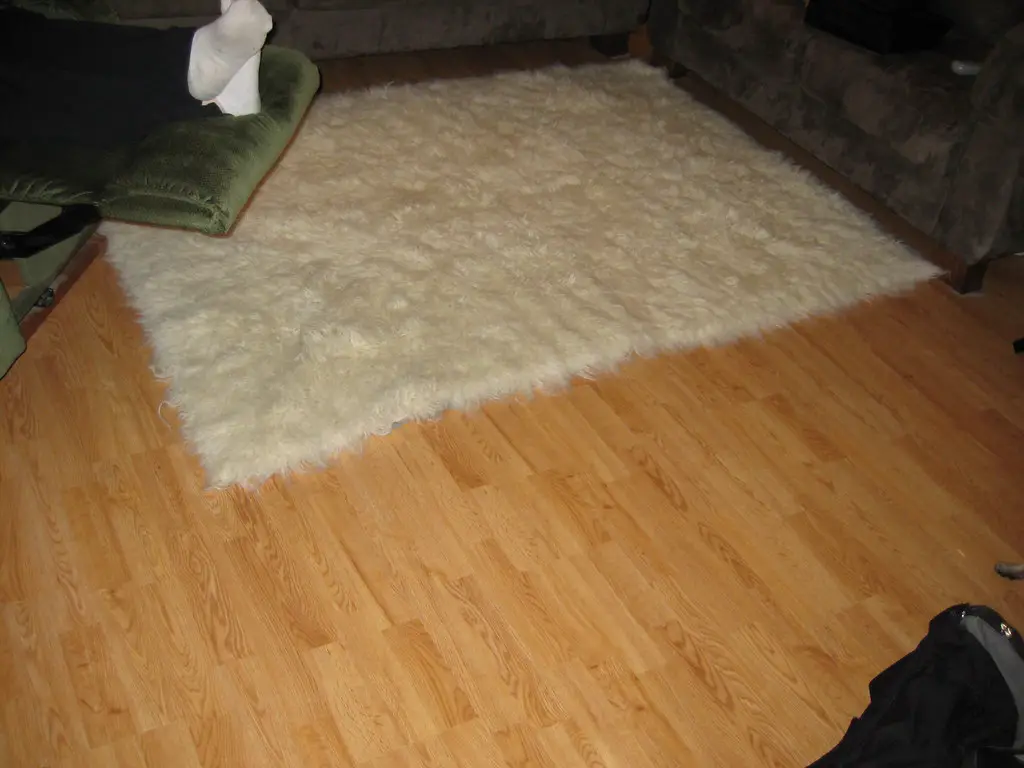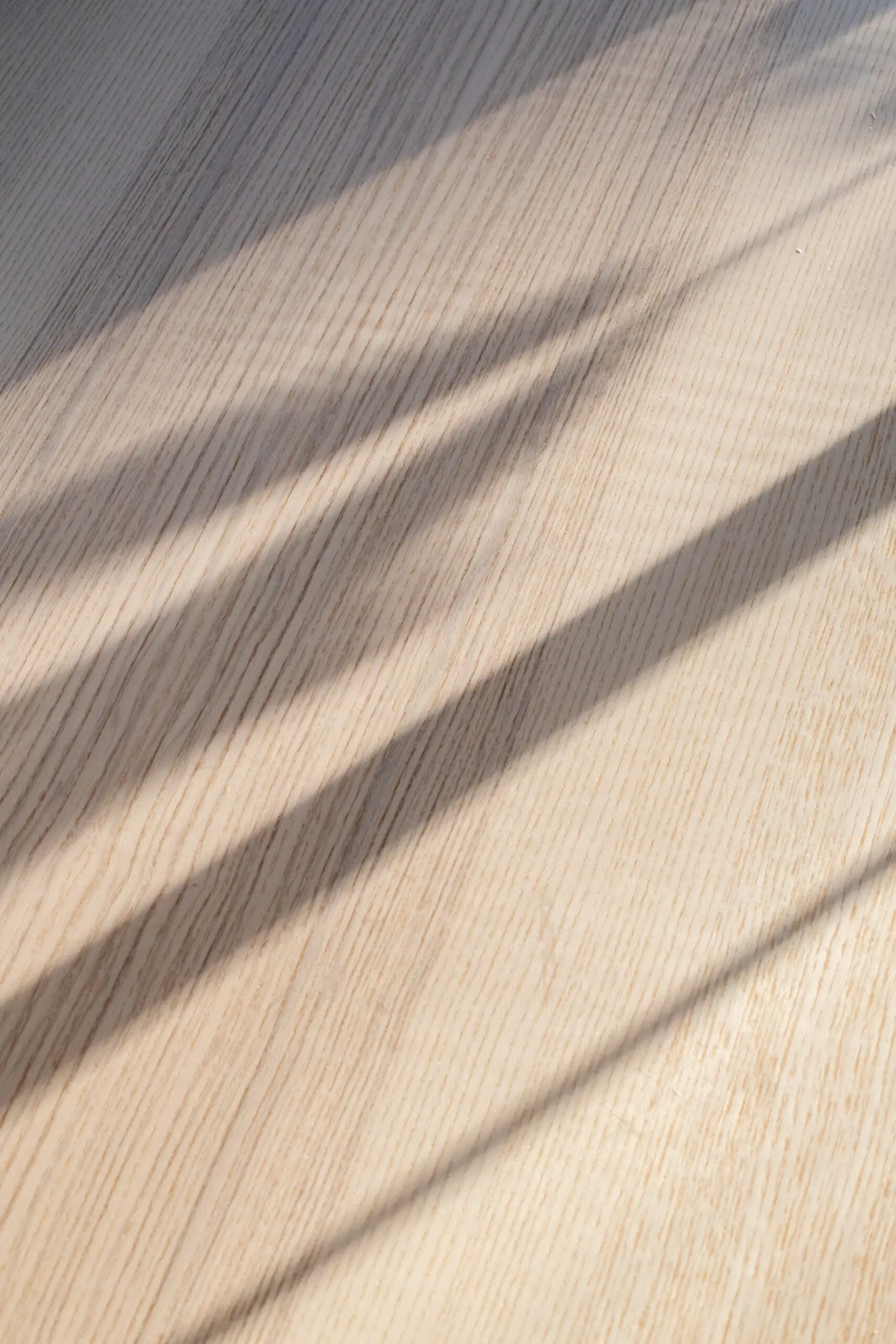Laminate flooring is an excellent choice for homeowners who want the look of hardwood or tile without the high cost. It’s easy to install, versatile, and low-maintenance. But with so many options on the market, it can be challenging to choose the right laminate flooring quality.
Investing in high-quality laminate flooring is crucial for many reasons. First and foremost, it will save you money in the long run by preventing premature wear and tear, repairs or replacements.
Low-quality laminates are known to fade quickly and warp under humid conditions. Cheap alternatives also lack adequate durability, making them prone to scratches and chips from furniture or foot traffic.
Another reason why selecting high-quality laminates matters is that they provide better aesthetics over lower quality alternatives; this makes your living space more attractive and comfortable as well as making your investment worthwhile. In this article, we’ll be discussing some things you need to think about when choosing laminate flooring quality that suits your needs while being durable enough to withstand time.
We will explore how a laminate’s AC rating affects its durability; how texture, design & style can affect its feel factor; types of core materials used in making laminates; installation considerations for DIYers versus professionals; maintenance care tips that keep floors looking new throughout their lifespan; cost vs value considerations when selecting a new floor type and environmentally friendly options too! We have taken what we believe are strong opinions on each of these topics because we want you our reader not just know what choices you have but be informed enough so that you can make an informed decision based on facts rather than fiction surrounding this hugely important investment in your home!
Understanding Laminate Flooring Quality
The AC Rating System: A Key Factor in Choosing the Right Quality
When it comes to choosing the right laminate flooring quality, one of the most important factors to consider is the AC rating. This rating system was created by the Association of European Producers of Laminate Flooring (EPLF) and measures a laminate floor’s performance and durability.
The AC rating system goes from AC1 to AC5, with each level indicating a different level of use and wear resistance. Floors with a lower rating (AC1 or AC2) are suitable for low-traffic areas like bedrooms or closets, while higher-rated floors (AC3 to AC5) are better suited for high-traffic commercial areas.
How The AC Rating System Affects Durability and Lifespan
Choosing a laminate flooring quality that has an appropriate AC rating for your needs is critical if you want your flooring to last. Lower-rated floors may be less expensive, but they won’t hold up over time.

They will scratch easily and show wear quickly, which can be costly in terms of replacement costs down the road. On the other hand, choosing a high-quality laminate floor with an appropriate AC rating means it will stand up to heavy traffic, pets, children, and more without showing signs of damage.
You’ll get years – even decades – out of your investment. In fact, high-quality laminate flooring can even be more durable than some types of hardwood or tile flooring because it resists scratches and dents so well.
My Opinion on Understanding Laminate Flooring Quality:
The bottom line is that if you want your laminate floors to look great over time – as well as saving money on replacement costs down the road – you need to choose an appropriate quality that has a high enough AC rating for your needs.
The Look and Feel Factor
Texture and Design: More Than Just Aesthetics
When it comes to choosing the right laminate flooring, many people tend to focus solely on aesthetics. However, the look and feel of your flooring is not just a matter of style – it can also significantly impact the way your space feels and functions. Texture is a crucial factor that can affect how comfortable people are walking on your floors, while design can make or break the harmony of your interior decor scheme.
Texture refers to the surface feel of a laminate floor. The texture you choose will influence how slippery or grippy your floors are, as well as how much noise they make when walked on.
For example, if you have kids or pets who tend to run around a lot, you may want to opt for a laminate flooring that has more traction to avoid accidents. On the other hand, if you’re looking for a more polished look in an office or formal living room space, a smoother texture might be more suitable.
Design is another important consideration when selecting high-quality laminate flooring. Your choice should complement and enhance the existing decor in your home rather than clash with it.
If you’re going for a minimalist aesthetic in your home, opt for simple designs like wide planks or tile patterns without too much detail. For those who prefer bold statements in their interior design scheme, textured designs like wood grain patterns or distressed looks may be more appropriate.
Choosing A Style That Suits Your Space
Selecting a style that suits the space is more than just picking an option that looks good – it’s about ensuring that all elements within the space work together harmoniously. When shopping for laminate flooring options consider factors like room size proportions and color schemes before making any final decisions.
For smaller spaces such as apartments or studio flats where square footage is limited; lighter colors can help to elongate the room and make it appear more spacious. Additionally, choosing larger board sizes can make a small space feel more expansive.
For larger rooms, darker hues can add depth, warmth and create a cozy environment without making the space seem too tight. Ultimately, when it comes to selecting high-quality laminate flooring, only choose a style that you truly love and that works seamlessly with your existing decor scheme.
The wrong choice of flooring could be an expensive mistake that you’ll have to deal with in the long run. Take the time to research your options and don’t be afraid to ask for help from professionals who specialize in laminate flooring installation so that you get it just right.
The Core Material
When it comes to choosing laminate flooring, the core material is a crucial factor to consider. The core material is responsible for the stability, durability, and water resistance of the flooring. There are three types of core materials used in laminate flooring: high-density fiberboard (HDF), medium-density fiberboard (MDF), and particleboard.
Types of Core Materials Used in Laminate Flooring
High-Density Fiberboard (HDF) – HDF is the most popular type of core material used in laminate flooring because it is strong and durable. HDF consists of compressed wood fibers that are bonded together with resin under high pressure.
HDF cores are able to withstand heavy foot traffic and resist moisture better than other types of cores. Medium-Density Fiberboard (MDF) – MDF cores are made from smaller wood fibers than HDF.

While MDF is cheaper than HDF, it is also less durable and not as water-resistant. MDF cores may be suitable for low-traffic areas or rooms with low humidity levels.
Particleboard – Particleboard cores are made by bonding wood particles together with resin under pressure. Particleboard is the cheapest type of core material used in laminate flooring but it also has the lowest durability and water resistance out of all three options.
Which One Is Best Suited for Your Needs?
When choosing a core material for your laminate flooring, you want to consider factors such as location, traffic level, and moisture levels. For example, if you live in an area with high humidity levels or have pets or children running around your home regularly, an HDF core would be your best option due to its superior durability and water resistance.
On the other hand, if you’re looking to save some money and don’t expect much foot traffic or moisture exposure in a particular room then perhaps MDF or particle board would suffice. It’s important to remember that the core material is just one of many factors to consider when choosing laminate flooring.
You should also take into account factors such as design, texture, and installation method. Ultimately, your choice of core material should align with your specific needs and preferences for your space, so take the time to do some research and weigh all options before making a final decision.
Installation Considerations
DIY vs Professional Installation: Don’t Be a Fool and Waste Your Time
There are many things to consider when it comes to installing laminate flooring, but the biggest question of all is whether to do it yourself or hire a professional. Let me tell you, unless you have experience and the right tools, you are better off hiring someone who knows what they’re doing. You may think you’re saving money by doing it yourself, but in the long run, you could be making a costly mistake.
Laminate flooring is not as easy as it may seem. It requires precise measurements, cutting skills, and patience.
If any of these things are lacking in your DIY skills, then save yourself time and headache by hiring a professional installer. They will get the job done much quicker than you can and ensure that the job is done right.
Preparing the Subfloor for Installation: A Solid Foundation Means A Better Floor
A subfloor is an essential component of any flooring installation project. It provides a solid foundation for your laminate flooring to sit on top of and helps prevent damage from moisture or uneven surfaces.
If your subfloor isn’t properly prepared before installation, it can cause problems down the road. Before laying down any laminate flooring, make sure your subfloor is clean and free of debris.
Any loose nails or screws should be removed so that there are no protruding objects that could damage your new flooring. If there are any cracks or gaps in the subflooring surface beneath where you’ll lay down planks of laminate then fill them with floor leveling compound.
In addition to cleaning and leveling out your subflooring surface proper insulation must be installed where necessary to provide proper soundproofing between rooms on different levels. Taking these necessary steps will help ensure that your laminate flooring lasts longer without issues such as warping or unevenness in the surface.
Conclusion: Leave It to the Professionals
Unless you have experience and all the necessary tools, it’s best to hire a professional installer for your laminate flooring project. They will get the job done quicker and ensure that it’s done right with minimal damage to your subfloor. Also, preparing your subfloor properly before installation is crucial to ensuring that you have a solid foundation that will last for years to come.
So don’t skimp on this step! Trust me: if you go through all of these steps only to have an amateur installation or subpar floor quality because of poor preparation, you’ll regret not having invested in a skilled professional from the beginning.
Maintenance and Care Tips
Cleaning tips to keep your floors looking new
Let’s start with the basics – cleaning. Laminate flooring is known for its durability, but that doesn’t mean it’s bulletproof.
To keep your beautiful new floors looking their best, you need to clean them regularly. Now, I’m not talking about a quick sweep every now and then.
Oh no, we’re talking about a deep clean that will make your mother-in-law jealous. First off, invest in a good quality vacuum cleaner designed for hard floors.
One of those cheapo vacuums with the rotating brush is going to scratch up your laminate in no time flat. Once you’ve got your vacuum sorted out, it’s time to get down on your hands and knees (yes, you read that right) and use a microfiber mop or cloth to remove any stubborn dirt and grime.
Tips on how to prevent scratches and damage
You may think that once you’ve installed laminate flooring, you can just sit back and relax without worrying about scratches or dings. But the truth is, even the toughest laminate can still be damaged if not cared for properly. One of the simplest ways to prevent damage is by using furniture pads on all of your chairs, tables and other heavy furniture pieces.
Trust me- nothing screams “I don’t care about my floors” more than dragging heavy furniture across them without any protection. Another thing you should avoid doing is using abrasive cleaning agents or tools like steel wool or scouring pads – they’ll leave permanent marks on your flooring faster than a speeding bullet.
– let’s talk pet peeves – I cannot stress this enough – please trim your pet’s nails! Scratches from pets are some of the most common causes of damage seen in laminate flooring today.
: Take care of those floors like you would a newborn baby. Clean them with care, avoid dragging heavy furniture and keep those beasts on leashes and nail clippers at the ready.
Cost vs Value
The Pricing Problem
It’s no secret that laminate flooring can often be significantly cheaper than hardwood or other luxury flooring options. However, the old adage “you get what you pay for” is especially true in the realm of laminate flooring.
It can be tempting to opt for the cheapest option available, but this is likely to lead to disappointment in the long run. One of the biggest issues with cheap laminate flooring is that it simply won’t last.
The lower quality materials used mean it will wear down much faster than a higher quality product, and you’ll find yourself needing to replace it far sooner than you would have expected. This means additional costs over time, making it a less cost-effective option in the long run.
The Value Proposition
When considering value, it’s important to think beyond just upfront costs. While high-quality laminate options may require a larger investment up front, they are worth considering as they will save you money in the long run by lasting longer and requiring fewer repairs or replacements. Additionally, high-quality laminate flooring has a number of benefits that go beyond just longevity.

For example, top-tier laminates are designed to look and feel much more like real hardwood floors – something that cheaper options simply can’t match. This means your home will have a more elevated look and feel overall.
The Cost-Benefit Analysis
Ultimately, when determining whether high-quality laminate is worth the investment, it’s important to do a cost-benefit analysis based on your individual needs and priorities. For example: – Is longevity more important than upfront cost?
– Do you want your floors to look as close to real hardwood as possible? – Is eco-friendliness or sustainability an important factor?
– Are there any high-traffic areas where durability should take priority? By weighing these considerations against both the upfront cost and the long-term value of a high-quality laminate option, you’ll be able to make an informed decision that is right for your lifestyle and budget.
Environmental Impact
The Problem with Traditional Laminate Flooring
Let’s get real for a moment. While laminate flooring has many benefits, it’s not exactly an eco-friendly choice.

Traditional laminate flooring is made with high levels of formaldehyde, a known carcinogen. This hazardous chemical is also released into the air over time as the flooring degrades or is exposed to heat and humidity.
Not only is it bad for your indoor air quality, but it’s harmful to the environment as well. Additionally, traditional laminate flooring requires virgin wood to create the core material.
This means that trees are cut down and harvested specifically for the production of floorboards. Not only does this contribute to deforestation, but it also increases our carbon footprint by requiring more energy and resources in transportation and processing.
Eco-Friendly Alternatives
The good news is that there are now eco-friendly alternatives available in the laminate flooring market. One option is to choose a product made with recycled materials, such as reclaimed wood or plastic bottles.
This reduces waste by repurposing materials that would otherwise end up in landfills. Another alternative is to select a brand that uses low-VOC adhesives and coatings in their products.
These help reduce off-gassing of harmful chemicals into your home’s atmosphere, while still providing quality protection against wear and tear. But perhaps the most exciting option is Bio-flooring technology which utilizes biodegradable corn starch or similar renewable materials instead of wood fibers reducing its environmental impact substantially.
Conclusion: Make an Informed Choice
At a time when our impact on the environment matters more than ever before, we need to be informed consumers who make environmentally conscious choices whenever possible. Choosing eco-friendly options in laminate flooring helps protect our planet while still providing all of the benefits we desire from our floors. So let’s do our part and make the responsible choice when it comes to our flooring needs.
Conclusion
Choosing the right laminate flooring quality is crucial to ensuring the longevity, durability, and aesthetic appeal of your home’s surfaces. By considering factors like AC rating, texture, core material type, installation considerations, maintenance and care tips, cost versus value analysis, and environmental impact you can make a well-informed decision about which laminate flooring quality is best suited for your needs. When it comes to AC ratings, always aim for a rating of at least AC3 for residential spaces.
The higher the rating, the more durable the laminate flooring will be. Always consider texture when choosing your laminate flooring since it can greatly influence how it looks and feels in your space.
Remember that high gloss finishes may look beautiful initially but they scratch easily and may show wear and tear much faster than matte or textured finishes. The type of core material used in a laminate floor plays a big role in its overall strength and moisture resistance.
HDF (high-density fiberboard) cores are best suited for most spaces since they are resistant to water damage and provide excellent stability. When installing laminate flooring consider whether you have enough experience with carpentry work or if you should outsource to professionals.
Always prepare the subfloor carefully before installing new floors to avoid any issues down the line. Maintenance is key when it comes to keeping your floors looking new over time.
Always sweep or vacuum regularly to prevent dust buildup from scratching surfaces. Use a damp mop with mild cleaning products when necessary but avoid excessive water exposure that could warp or damage your floors.
While cost should be considered when choosing new floors ultimately it shouldn’t be the only factor you think about when making decisions. Investing in high-quality laminate flooring can save you money over time since cheaper options often wear out faster requiring costly replacements much sooner than more expensive options do.
choosing high-quality laminate flooring takes research but pays off in terms of durability style and long-term cost savings. Take into account the AC rating texture and core material type when making a decision, get professional help if needed, maintain the floors well and don’t be afraid to invest in something that brings you joy and satisfaction.

